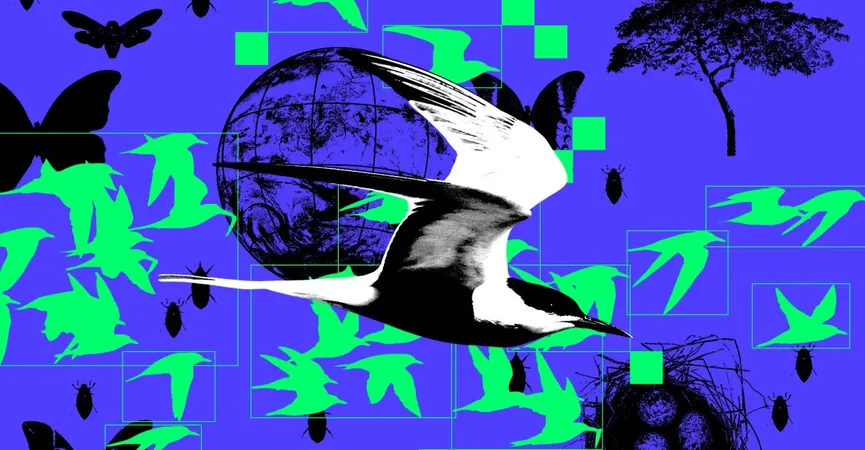
AI's Double-Edged Sword: Is It the Key to Saving Wildlife or Just Another Threat?
2025-04-22
Author: Daniel
Transforming Wildlife Conservation with Technology
In the wetlands of Senegal, researcher Alexandre Delplanque is harnessing the power of drone technology to monitor waterbird populations, including pelicans and flamingos. While he pilots the drone, advanced AI algorithms analyze the images, drastically reducing the time needed for surveys from thousands of hours to mere moments. This innovation comes at a crucial time, as wildlife populations have seen a staggering decline of over seventy percent since 1970.
The Crisis of Biodiversity
As we face a sixth mass extinction, the urgency to understand and protect our planet's fauna has never been greater. Scientists estimate that over 80 percent of insect species remain unidentified, and groundbreaking research highlighted that a week’s worth of camera trap footage in Panama revealed more than 300 species new to science. Clearly, knowing what we have is the first step to preventing extinction.
Mixed Reactions to AI in Conservation
While AI's ability to process vast datasets in seconds offers major advantages—exposing patterns and interconnections in ecosystems often missed by human analysis—it’s not without concern. Critics highlight the environmental footprint of AI technology, potential biases, and ethical dilemmas it poses. Despite the promise of object detection models aiding species identification, there’s a growing dialogue about the environmental toll these technologies could bring.
Drones and Data Centers: What’s the Cost?
AI's implementation often garners media attention, especially in striking cases like the search for a female partner for a rare cycad plant. But behind the flashy headlines is a complex web of environmental trade-offs. Training AI models can consume vast amounts of electricity and water; data centers alone are expected to withdraw billions of cubic meters of water annually, exacerbating issues in water-scarce regions.
Is Conservation Tech Helping or Hurting?
As researchers like Delplanque argue their low-impact models aren't harmful, others caution against complacency. Current AI applications in biology may be small but don’t fully exploit the potential of the technology. Perspectives like Tanya Berger-Wolf's urge us to move beyond traditional methods of observation, advocating for the exploration of deeper ecological questions through AI.
Decoding Animal Languages: A Controversial Frontier
One of the most intriguing—and contentious—ideas is using AI to decipher animal communication. Projects like the Earth Species Project are ambitious in their goal to communicate with non-human life. Yet ethical concerns abound: is it responsible to delve into interspecies dialogue, and will we see meaningful progress? Critics believe we should prioritize areas where AI can significantly enhance our understanding of ecosystems.
A Cautionary Note on AI Bias
Even as we celebrate technological advancements, it’s essential to recognize the biases inherent in AI. Data misrepresentation and unequal resource allocation can skew conservation efforts toward popular species while neglecting lesser-known ones. As Hamish van der Ven points out, we need a careful balance between leveraging AI for conservation and acknowledging its potential drawbacks.


 Brasil (PT)
Brasil (PT)
 Canada (EN)
Canada (EN)
 Chile (ES)
Chile (ES)
 Česko (CS)
Česko (CS)
 대한민국 (KO)
대한민국 (KO)
 España (ES)
España (ES)
 France (FR)
France (FR)
 Hong Kong (EN)
Hong Kong (EN)
 Italia (IT)
Italia (IT)
 日本 (JA)
日本 (JA)
 Magyarország (HU)
Magyarország (HU)
 Norge (NO)
Norge (NO)
 Polska (PL)
Polska (PL)
 Schweiz (DE)
Schweiz (DE)
 Singapore (EN)
Singapore (EN)
 Sverige (SV)
Sverige (SV)
 Suomi (FI)
Suomi (FI)
 Türkiye (TR)
Türkiye (TR)
 الإمارات العربية المتحدة (AR)
الإمارات العربية المتحدة (AR)